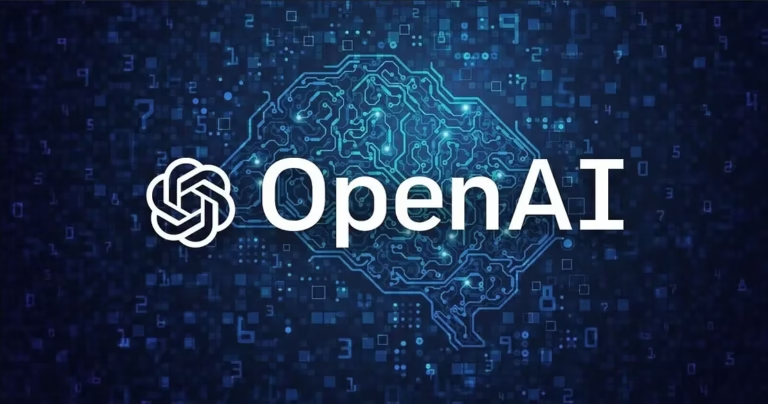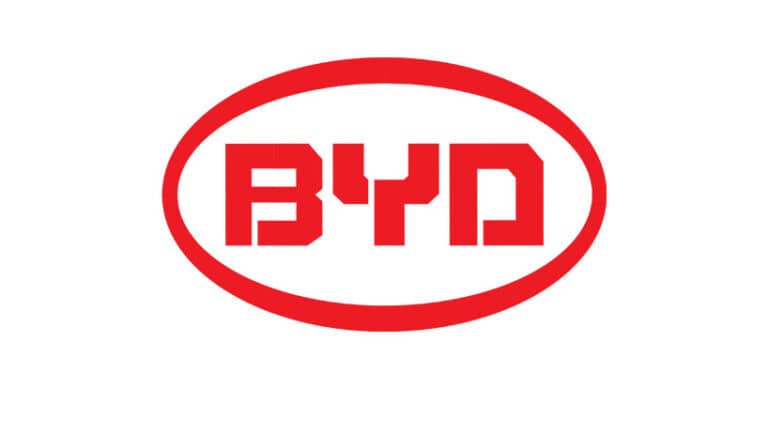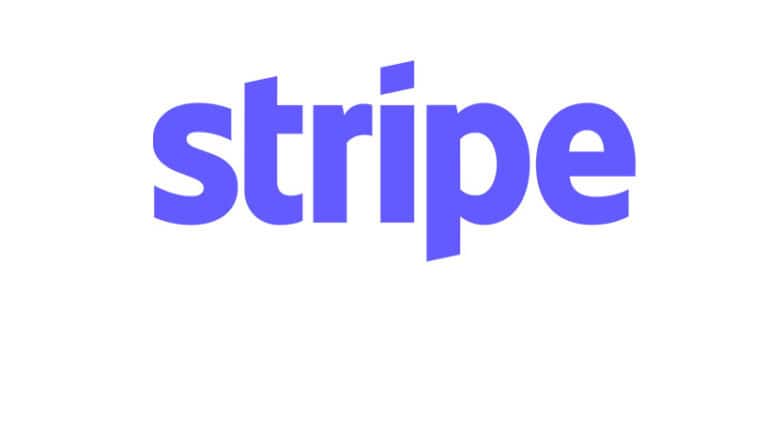1. Introduction: Why OpenAI's ML Interviews Are Unique
OpenAI has established itself as a leader in the field of artificial intelligence, known for groundbreaking research and innovative contributions to machine learning (ML) and natural language processing (NLP). Candidates aiming to join must prepare thoroughly for the OpenAI ML interview process.With an ambition to develop artificial general intelligence (AGI) that benefits humanity, OpenAI attracts top talent from across the globe. As a result, its interview process is among the most rigorous and competitive in the tech industry.
The OpenAI interview is not your typical software engineering interview. It requires a deep understanding of machine learning principles, a solid grasp of coding skills, and the ability to solve complex, open-ended problems. What makes OpenAI’s interview process stand out is its focus on research-oriented problem solving, which emphasizes not only your technical skills but also your ability to think creatively and apply ML concepts in innovative ways.
For candidates aspiring to join OpenAI, it's crucial to understand what to expect and how to prepare effectively. This blog will provide a comprehensive guide on navigating the interview process, common questions to expect, preparation strategies, and the unique nuances of OpenAI’s evaluation methods.
2. Understanding the OpenAI Interview Process
The OpenAI interview process consists of multiple stages, each designed to assess different aspects of a candidate’s skill set and fit for the organization. Below is a detailed breakdown of the typical stages you may encounter:
2.1 Initial Screening
The first stage usually involves a technical screening, often conducted through an online coding platform like Codility or HackerRank. This initial screen aims to evaluate a candidate's coding proficiency and understanding of fundamental data structures and algorithms. You can expect:
Coding Challenges: Standard algorithmic problems (e.g., dynamic programming, graph traversal, and sorting problems) that test problem-solving skills.
Complexity Analysis: Questions that focus on analyzing time and space complexity.
Preparation Tips: Practice coding on platforms like LeetCode or CodeSignal, with a focus on medium to hard problems.
2.2 Technical Phone Interview
After clearing the initial screen, the next step is typically a technical phone interview. This session delves deeper into problem-solving abilities and tests your knowledge in core ML areas. Be prepared to solve coding problems on a shared document or whiteboard tool and discuss your thought process as you work through solutions.
Problem Solving and Algorithms: More complex problems, often with multiple parts or requiring optimization.
Knowledge of Machine Learning Concepts: Discussion on algorithms like gradient descent, classification models, or reinforcement learning techniques.
Preparation Tips: Review classic ML algorithms and their implementation. Brush up on topics like linear regression, clustering, and neural networks.
2.3 On-Site or Virtual On-Site Interviews
The on-site interview is the most comprehensive part of the OpenAI interview process, consisting of several back-to-back sessions with different team members. Each session focuses on distinct areas:
Machine Learning and Deep Learning Questions: Expect questions on neural network architectures, hyperparameter tuning, regularization techniques, and real-world applications.
Research Discussion: If you have published research, be prepared to discuss it in detail. The interviewer may ask you to explain your work, critique it, and suggest future research directions.
Coding Exercises: More advanced coding challenges that require implementing ML algorithms or solving problems in constrained environments.
System Design: You might be asked to design an end-to-end ML system, such as a recommendation engine or a real-time sentiment analysis pipeline.
Behavioral and Team Fit Interviews: Questions focused on teamwork, communication, and alignment with OpenAI’s mission.
Preparation Tips: Study cutting-edge ML papers and practice explaining complex ideas simply. Participate in mock interviews that mimic the research and system design discussions.
2.4 Team Fit and Culture Interview
The final stage is a cultural interview where interviewers assess whether you align with OpenAI’s values and team culture. They will evaluate your passion for AI safety, openness to collaboration, and long-term commitment to the company’s mission.
3. Top 20 Questions Asked in OpenAI ML Interviews with Sample Answers
What is the difference between supervised and unsupervised learning?Answer: Supervised learning involves training a model using labeled data, where the target outcome is known (e.g., predicting house prices). In contrast, unsupervised learning uses unlabeled data to identify patterns or groupings in the data, such as clustering customers based on behavior.
How does backpropagation work in a neural network?Answer: Backpropagation calculates the gradient of the loss function with respect to each weight in the network. It propagates the error backwards from the output layer to the input layer, updating weights using gradient descent to minimize the loss.
What is the vanishing gradient problem? How can it be solved?Answer: The vanishing gradient problem occurs when gradients become too small, causing slow learning in deep networks. It can be mitigated by using activation functions like ReLU, which help maintain gradient values, or by employing techniques like batch normalization.
What is the difference between L1 and L2 regularization?Answer: L1 regularization adds the absolute value of weights to the loss function, promoting sparsity (i.e., making some weights zero). L2 regularization adds the squared value of weights, penalizing large weights, and helps reduce overfitting without promoting sparsity.
Describe how a convolutional neural network (CNN) works.Answer: A CNN uses convolutional layers to extract spatial features from input data (usually images), pooling layers to reduce dimensionality, and fully connected layers for final classification. Convolutions detect patterns like edges, corners, and textures, making CNNs highly effective for image recognition.
What is a recurrent neural network (RNN), and when is it used?Answer: RNNs are used for sequential data, such as time series or natural language. They maintain a hidden state that captures previous information, making them suitable for tasks like language modeling and speech recognition. However, RNNs suffer from issues like vanishing gradients, which can be mitigated by LSTMs and GRUs.
Explain the difference between precision and recall.Answer: Precision measures the proportion of correctly predicted positive observations to the total predicted positives (true positives / (true positives + false positives)). Recall measures the proportion of correctly predicted positive observations to all observations in the actual class (true positives / (true positives + false negatives)).
What is reinforcement learning, and how does it differ from supervised learning?Answer: Reinforcement learning involves an agent interacting with an environment to maximize cumulative reward through exploration and exploitation. Unlike supervised learning, where labels guide learning, reinforcement learning relies on rewards and penalties to learn optimal actions over time.
What is the purpose of dropout in neural networks?Answer: Dropout is a regularization technique where randomly selected neurons are ignored during training. This prevents the network from becoming too dependent on specific neurons, reducing overfitting and improving generalization.
What is gradient clipping, and why is it used?Answer: Gradient clipping restricts the maximum value of gradients to prevent exploding gradients during backpropagation. This is particularly useful in training RNNs and deep networks, where unbounded gradients can cause instability and poor performance.
What is transfer learning, and how is it applied?Answer: Transfer learning involves using a pre-trained model on a related problem, which saves time and computational resources. It is often applied in tasks like image classification, where models like VGG or ResNet are pre-trained on large datasets like ImageNet and fine-tuned for specific tasks.
Explain Principal Component Analysis (PCA) and its applications.Answer: PCA is a dimensionality reduction technique that transforms data into a lower-dimensional space by identifying the directions (principal components) that maximize variance. It is used for feature reduction, visualization, and noise filtering in high-dimensional datasets.
What are GANs, and how do they work?Answer: GANs (Generative Adversarial Networks) consist of two neural networks: a generator that creates fake data and a discriminator that distinguishes between real and fake data. The two networks compete, with the generator improving its ability to produce realistic data, making GANs effective for tasks like image synthesis.
What is attention in neural networks, and why is it important?Answer: Attention mechanisms allow models to focus on specific parts of input sequences when generating outputs. It is crucial for tasks like machine translation and text summarization, where different words in a sentence may have varying importance.
How would you handle missing data in a dataset?Answer: Approaches include imputing missing values using mean, median, or mode, using models like KNN for imputation, or using algorithms like XGBoost, which handle missing values internally. Another approach is to use data augmentation or discard rows/columns with too many missing values.
What is the difference between bagging and boosting?Answer: Bagging (e.g., Random Forest) trains multiple models independently using random subsets of data and aggregates their results to reduce variance. Boosting (e.g., AdaBoost, Gradient Boosting) trains models sequentially, where each model corrects errors made by the previous one, reducing bias.
What is the purpose of cross-validation?Answer: Cross-validation is a technique for assessing how well a model generalizes to unseen data. The dataset is split into ‘k’ folds, and the model is trained on ‘k-1’ folds while tested on the remaining fold. This process is repeated ‘k’ times, and the results are averaged to get a more robust performance metric.
How would you explain overfitting and underfitting?Answer: Overfitting occurs when a model performs well on training data but poorly on unseen data due to being too complex. Underfitting happens when a model is too simple, failing to capture the underlying patterns in data. Balancing bias and variance is crucial to avoid both.
What are support vector machines (SVM), and when are they used?Answer: SVMs are supervised learning models used for classification and regression tasks. They work by finding the optimal hyperplane that separates data points into classes. SVMs are effective in high-dimensional spaces and when the number of dimensions exceeds the number of samples.
How does the bias-variance trade-off affect model performance?Answer: The bias-variance trade-off is a fundamental concept in ML that describes the trade-off between a model’s complexity and its ability to generalize. High bias leads to underfitting (low complexity), while high variance leads to overfitting (high complexity). The goal is to find a balance that minimizes total error.
4. Core ML and AI Concepts You Need to Master
To succeed in OpenAI interviews, having a strong grasp of foundational and advanced machine learning concepts is essential. Let’s delve deeper into the key areas:
4.1 Neural Networks and Deep Learning
Feedforward Networks: Understand how feedforward neural networks work, including concepts like activation functions, forward propagation, and backpropagation.
Convolutional Neural Networks (CNNs): Study how CNNs are designed to handle spatial data like images. Learn about key operations such as convolutions, pooling, padding, and the role of different architectures like ResNet, VGG, and Inception.
Recurrent Neural Networks (RNNs): Master the architecture of RNNs for sequence modeling tasks. Explore different types like LSTMs and GRUs, and understand how they handle long-term dependencies in data.
Transformer Networks: Study how Transformers have revolutionized NLP by introducing self-attention mechanisms. Understand how they work and why architectures like BERT and GPT have set new standards in NLP tasks.
Recommended Resources:
"Deep Learning" by Ian Goodfellow and Yoshua Bengio
TensorFlow and PyTorch documentation for hands-on practice
4.2 Reinforcement Learning (RL)
Markov Decision Processes (MDPs): Learn how MDPs formalize RL problems using states, actions, rewards, and transitions.
Q-Learning and Policy Gradients: Study the fundamentals of Q-learning and how policy gradients optimize decision-making in environments with unknown dynamics.
Applications: RL is used in robotics, autonomous systems, and game-playing agents like AlphaGo. Be prepared to discuss how RL can be applied to real-world problems.
Recommended Resources:
“Reinforcement Learning: An Introduction” by Sutton and Barto
OpenAI Gym for practical implementation
4.3 Natural Language Processing (NLP)
Text Preprocessing: Techniques like tokenization, stemming, and lemmatization are critical for preparing text data.
Word Embeddings: Understand models like Word2Vec, GloVe, and FastText for word representation.
Advanced Models: Transformers, BERT, GPT, and attention mechanisms are essential concepts to understand. Be able to discuss how these models handle tasks like sentiment analysis, translation, and text generation.
Recommended Resources:
“Speech and Language Processing” by Jurafsky and Martin
Hugging Face’s library for working with pre-trained NLP models
4.4 Probabilistic Models and Bayesian Inference
Bayesian Networks and Hidden Markov Models: Learn how these models represent probabilistic relationships and are used in tasks like time-series analysis.
Gaussian Processes: Study how these are used for non-linear regression problems and uncertainty quantification.
Applications: Probabilistic models are widely used in anomaly detection, time-series forecasting, and in scenarios where uncertainty needs to be captured explicitly.
Recommended Resources:
“Pattern Recognition and Machine Learning” by Christopher Bishop
PyMC3 or TensorFlow Probability for implementation
4.5 Optimization and Training Techniques
Gradient Descent Variants: Understand basic gradient descent and its variants like stochastic gradient descent (SGD), Adam, RMSprop, and AdaGrad.
Hyperparameter Tuning: Techniques like grid search, random search, and Bayesian optimization to find optimal hyperparameters.
Regularization Techniques: Methods like L1/L2 regularization, dropout, and batch normalization to prevent overfitting.
Recommended Resources:
“Optimization for Machine Learning” by Suvrit Sra, Sebastian Nowozin, and Stephen J. Wright
Hyperparameter optimization libraries like Optuna and Hyperopt
This detailed understanding of core ML and AI concepts will not only prepare you for technical questions but also help you in explaining your research work and solving real-world ML problems during the interview.
5. Coding Challenges and System Design: How to Approach Them
In OpenAI’s machine learning interviews, coding challenges and system design problems are integral components. The ability to code efficiently and design robust ML systems is crucial, as OpenAI’s work often involves implementing cutting-edge research into real-world applications. Below is an in-depth guide to tackling these challenges:
5.1. Approaching Coding Challenges
OpenAI’s coding challenges are typically more advanced compared to standard software engineering interviews. They often involve problems related to algorithms, data structures, and even specific ML implementations. Here’s how to approach them effectively:
Understand the Problem Thoroughly: Take a few minutes to understand the problem statement completely. Ask clarifying questions if necessary.
Create a Plan Before Coding: Outline your solution with pseudo-code or logical steps. This will help you avoid unnecessary errors and ensure your solution is well-structured.
Consider Edge Cases and Constraints: Think about the edge cases that could break your code. Address these in your initial design.
Optimize for Time and Space: OpenAI values efficiency, so always consider the time and space complexity of your solution. Use techniques like dynamic programming or greedy algorithms when applicable.
Test and Debug: After implementing your solution, test it with a variety of cases. If a bug is found, revisit your logic step-by-step.
Example Coding Problems for Practice:
Implementing a data structure like LRU Cache using linked lists and hashmaps.
Finding the shortest path in a weighted graph using Dijkstra’s Algorithm.
Implementing backpropagation for a small neural network using only NumPy.
5.2. Tackling System Design Problems in ML
System design questions in an ML interview can vary from designing data pipelines to building large-scale ML models that handle millions of data points. OpenAI’s emphasis on system design is primarily due to the need for robust, scalable, and efficient systems that can support research and production workloads. Here’s a guide to approaching these problems:
Understand the Requirements: Clarify the scope and requirements of the problem. Is the focus on scalability, latency, or accuracy? Are there constraints related to hardware or cost?
Break Down the System into Components: Identify key components such as data ingestion, preprocessing, model training, inference, and monitoring.
Consider ML-Specific Factors: Discuss model retraining, feature engineering, hyperparameter optimization, and data versioning.
Scalability and Efficiency: Design for distributed systems where training can be parallelized. Use techniques like model compression or distributed training with frameworks like Horovod or TensorFlow.
Example System Design Problems:
Design a real-time recommendation system for a social media platform.
Key considerations: user behavior tracking, feature engineering, and latency.
Design an ML pipeline for fraud detection in financial transactions.
Key considerations: handling high-dimensional data, ensuring model explainability, and real-time response.
Design an end-to-end NLP system for customer sentiment analysis.
Key considerations: text preprocessing, sequence models like LSTMs or Transformers, and model deployment.
Preparation Tips:
Study ML system design principles from resources like “Designing Data-Intensive Applications” by Martin Kleppmann.
Familiarize yourself with cloud-based ML services (e.g., AWS SageMaker, Google AI Platform) and frameworks for deploying models at scale.
6. Behavioral and Research-Focused Questions: How to Stand Out
Behavioral and research-focused questions play a significant role in determining a candidate’s suitability for OpenAI. Given OpenAI’s research-driven nature, candidates are expected to articulate their past projects and research work clearly, showing depth of understanding and innovative thinking.
6.1. Behavioral Questions: What OpenAI Looks For
OpenAI values candidates who are not only technically proficient but also exhibit strong interpersonal skills and a collaborative mindset. Behavioral questions often revolve around your experiences, problem-solving approach, and alignment with OpenAI’s mission. Here are some common behavioral questions you might encounter:
Describe a challenging project you worked on and how you overcame obstacles.
Focus on demonstrating resilience, critical thinking, and creativity in problem-solving.
Give an example of a time when you had to learn a new skill quickly.
Highlight your ability to adapt, self-learn, and contribute effectively despite gaps in knowledge.
How do you approach teamwork in research-oriented environments?
Discuss your experience collaborating on research projects, handling disagreements constructively, and your openness to feedback.
Preparation Tips:
Use the STAR method (Situation, Task, Action, Result) to structure your answers.
Prepare specific examples that showcase your research, teamwork, and leadership skills.
6.2. Research-Focused Discussions
For candidates with a research background, OpenAI places a strong emphasis on discussing past research work, contributions to ML, and future research interests. The ability to communicate complex research ideas and methodologies in a clear and concise manner is critical.
Discussing Your Research Work: Be ready to dive deep into your research papers. Explain the problem you addressed, the methodology used, results obtained, and potential impact.
Critiquing and Defending Research: The interviewer may ask questions that challenge your research choices or methodologies. Be prepared to defend your work and suggest alternative approaches.
Discussing Future Research Directions: Show that you’re forward-thinking by discussing potential future research areas, improvements to existing models, or novel applications.
Preparation Tips:
Review your research papers and practice explaining them to a non-expert audience.
Stay updated on recent developments in ML and have opinions on emerging trends.
7. Do’s and Don’ts in an OpenAI Interview
Interviews at OpenAI can be challenging, and making a strong impression requires knowing what to focus on and what to avoid. Here’s a quick guide on do’s and don’ts that can help you perform your best:
Do’s:
Do Be Honest About Your Strengths and Weaknesses: If you’re not familiar with a particular concept, be upfront about it. OpenAI values honesty and willingness to learn over pretending to know everything.
Do Communicate Your Thought Process Clearly: Verbalize your reasoning, even if you’re not sure of the final solution. This helps interviewers gauge your problem-solving abilities.
Do Show Enthusiasm for OpenAI’s Mission: Express your passion for advancing AI in a safe and beneficial manner. Familiarize yourself with OpenAI’s core research areas and publications.
Do Prepare for Research Discussions: Be ready to discuss past research work in-depth, as well as how your expertise can contribute to OpenAI’s projects.
Don’ts:
Don’t Over-Engineer Your Solutions: Avoid adding unnecessary complexity to your code or design. Aim for clarity and simplicity.
Don’t Get Stuck on a Single Approach: If an idea doesn’t work, quickly pivot to another solution. Showing flexibility is crucial in research-based interviews.
Don’t Ignore Edge Cases and Testing: In coding challenges, always consider how your solution handles edge cases, unusual inputs, and large datasets.
Don’t Be Overly Formal or Rigid: OpenAI values a collaborative and open culture, so don’t hesitate to engage in a conversational tone and show your personality.
8. How InterviewNode Can Help You Succeed
At InterviewNode, we specialize in helping software engineers and ML practitioners prepare for high-stakes interviews at top companies like OpenAI. Our tailored approach ensures that you receive personalized guidance and resources to excel in each stage of the interview process.
8.1. Personalized Mock Interviews with ML Experts
We provide mock interviews with seasoned ML professionals who have firsthand experience with OpenAI’s interview process. Our experts offer constructive feedback, helping you identify and improve areas of weakness.
8.2. Custom ML Interview Preparation Programs
Our preparation programs are designed to cover every aspect of ML interviews, including coding challenges, system design, research discussions, and behavioral questions. You’ll receive targeted practice problems, interview guides, and curated reading materials.
8.3. Real-World Case Studies and Project Reviews
We offer case studies and project reviews to help you articulate your past research work or industry projects more effectively. Our reviewers will help you present your contributions in a way that stands out to interviewers.
9. Additional Resources and Final Tips for ML Interview Preparation
Here are some additional resources to help you prepare for OpenAI and similar ML interviews:
Books: "Deep Learning" by Ian Goodfellow, "Pattern Recognition and Machine Learning" by Christopher Bishop.
Courses: Andrew Ng’s "Deep Learning Specialization" on Coursera, MIT’s "Deep Learning for Self-Driving Cars" on edX.
Websites and Papers: Stay updated with arXiv, the Journal of Machine Learning Research (JMLR), and OpenAI’s own research blog.
Practice Platforms: Use LeetCode for coding challenges, and engage in Kaggle competitions for hands-on ML problem solving.
Final Tips:
Stay calm and focused during the interview.
Take breaks when needed, and don’t be afraid to ask for clarification.
Show enthusiasm and curiosity — two traits that OpenAI highly values in candidates.






